Amphu Labtsa Pass (5,845 m): Highest Mountain Pass In Nepal

Amphu Labtsa Pass is one of the famous mountain passes located in Nepal. The pass lies at a height of 5,845 meters (19,177 ft) above sea level. The pass is full of glaciers and is covered with seracs. To reach the Amphu Labtsa pass, one has to move towards the head of the Honku valley. There are many glacial lakes in this pass, among which one is a sacred lake. The Amphu Labtsa pass has to be crossed in order to reach the Island Peak or Baruntse. These expeditions are very technical on the way above the pass and in the pass.
Hence, it is always important that a person keeps his mind awake at all times when he is climbing through this pass. There are many interesting facts about Amphu Labtsa pass that we have summed up in this article; make sure to read till the end to know more!
What is Amphu Labtsa?
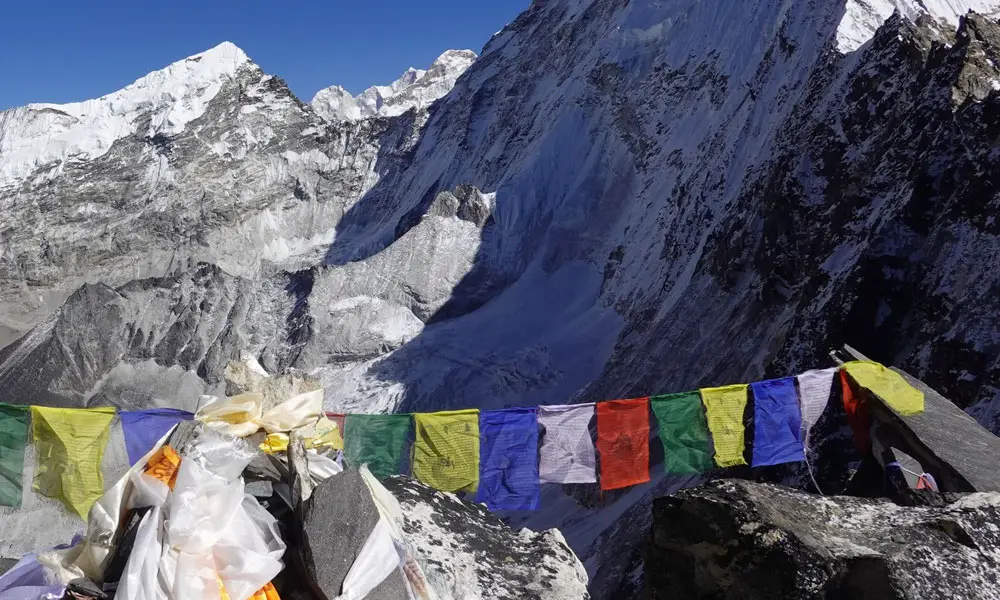
Amphu Lapcha La is a mountain pass located in the Himalayas in Nepal. The pass is very popular among mountaineers all around the world as it has to be crossed to summit the Island Peak or Baruntse. The pass lies at a height of 5845 meters. The pass is situated between Amphu Lapcha and Island Peak. The mountain pass also connects the Mount Everest region with the upper Hinku Valley.
The location is very close to many other scenic routes like Island Peak, Imja Glacier, and Lhotse Shar. The alpine grade of Amphu Laptsa has been estimated to be “D.” Similarly, reaching Island Peak takes ascending to the mountain, while Imja Glacier can be reached by descending with the help of a rope. The Imja Glacier is on the other side of Amphu Labtsa.
Amphu Labtsa Pass trek
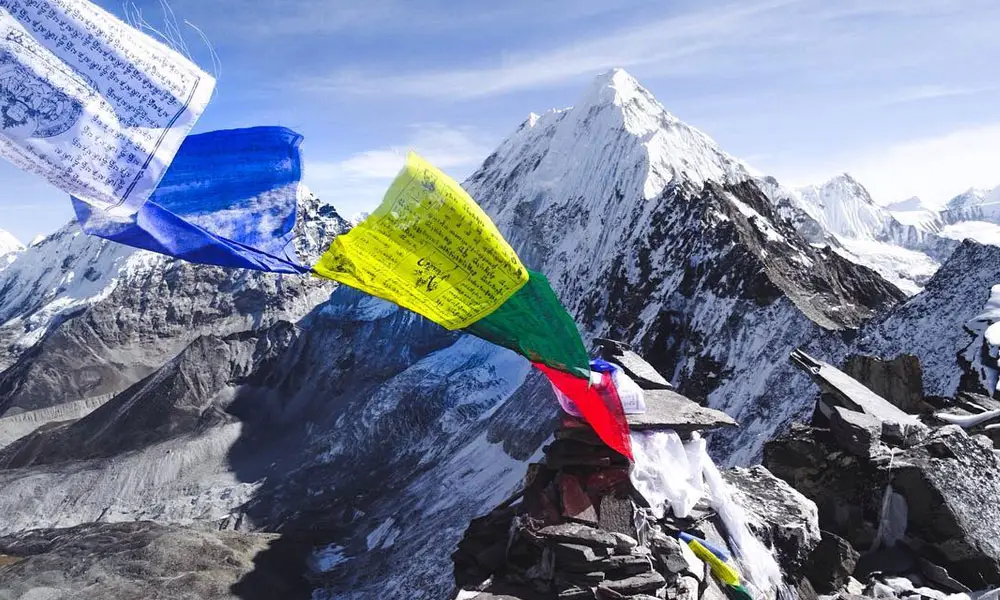
Amphu Lapcha Pass has to be one of the most challenging treks around the Khumbu region. The trek is responsible for covering some of the most natural and interesting areas in the Eastern Himalayan region in Nepal. The trek will take you along Sagarmatha National Park premises. One might wonder what is the most fascinating aspect of this trek; it definitely has the view of the snowy capped mountains of the Kanchenjunga region. The beautiful view has always been considered worth the hardships of climbing this mountain. You will be able to experience the scenic view of not just one but several mountains, namely Karyolung Himal, Lumding Himal, Mera Peak, Peak 43 (Kyashar Peak), Kusum Kangaru, Mt. Everest, Mt. Amadablam, Mt. Nuptse and Mt. Lhotse with heights 6,511 m, 6,111 m, 6,189 m, 6,769 m, 6,367 m, 8,848 m, 6,812 m, 7,861 m, and 8,516 m respectively.
Mountaineers and trekkers will also be able to experience very closely the ethnic lives of the Sherpa community in the area. There are different indigenous communities within the Sherpa ethnic villages, like Rai and Tamang, around the Dudh Koshi River belonging to Inkhu-Hongu Valley. There are several other factors that are going to attract the onlookers in every way possible, like the prayer flags, monasteries, rural nature of the villages and the mountains, which might be new to a lot of trekkers, mane walls, etc.
Two of the most prominent monasteries along the way of Amphu Labtsa Pass are Pangboche Monastery and Tengboche Monastery. While the Tenboche Monastery is the largest monastery, the Pangboche Monastery is the oldest in the Khumbu Region. Another attraction for trekkers going to the Amphu Labtsa Pass trek is Namche Bazaar. This town is full of modernity yet gives an essence of the typical lifestyle of the people in the old area.
How to prepare for the Amphu Labtsa Pass trek?

One can prepare for the Amphu Labtsa trek by keeping in mind a few things. The pass is not the easiest to climb. Hence, one at least has to be trained to an extent in order to be able to trek to the site. Moreover, what one wears and carries creates a big impact on the experience of the person. You can prepare for the Amphu Labtsa trek by first getting to know about the necessary equipment. The more you carry along, the better. One cannot miss out on the following equipment and gear when preparing for Amphu Labtsa:
- Climbing ropes
- Crampons
- Harness
- Ice boots
- Ice axe
- Carabiners
- Thermal pants and jackets
- Mountaineering socks and shoes
- Gloves
- Helmet
- Climbing pole
Moreover, you will have to carry along some snacks as it is not easy to find food in the rural mountain pass. It is necessary that one stays hydrated throughout his trek, so he has to carry along a water bottle with a good amount of water.
A person who plans to climb through the Amphu Lapcha pass has to be physically fit and should work out at least 5 times a week in order to get all set. Someone with no physical potential cannot climb the pass. Amphu Labtsa requires one to have a healthy and winning mindset on top of good physical fitness.
Amphu Labtsa Pass Itinerary
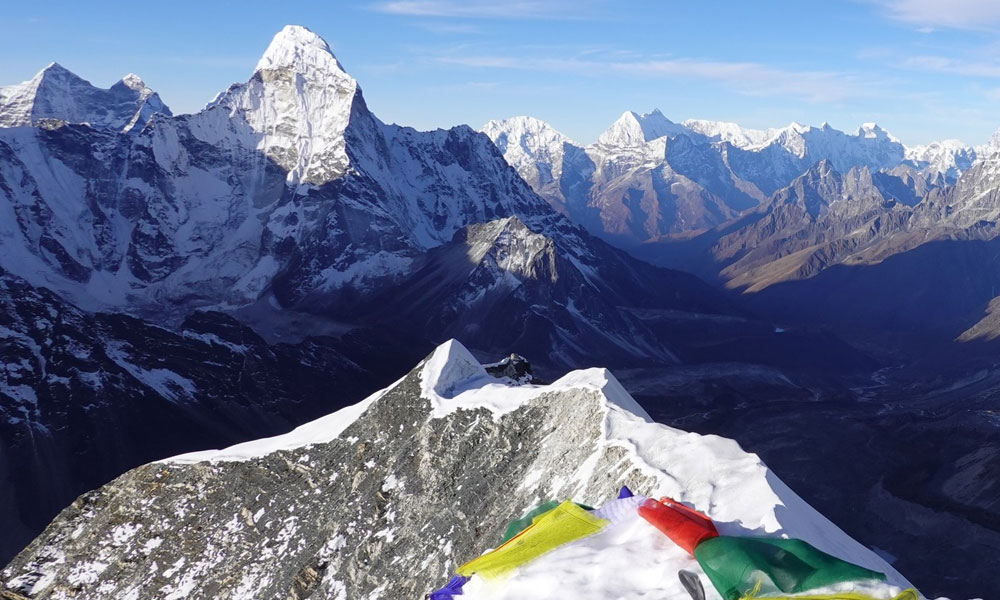
Day 1: Arrival at Kathmandu
Day 2: Tour around Kathmandu and Preparation for trek
Day 3: Kathmandu to Lukla to Chutunga
Day 4: Chutunga to ThuliKharka
Day 5: ThuliKharka to Thangnak
Day 6: Thangnak to Khare
Day 7: Acclimatization Day
Day 8: Khare to Kongme DingmaDay 8:
Day 9: Kongme Dingma to Seto Pokhari
Day 10: Seto Pokhari to Amphu Labtsa basecamp(Southern)
Day 11: Amphu Labtsa basecamp to Chhukung
Day 12: Chhukung to Tengboche Monastery
Day 13: Tengboche monastery to Namche bazaar
Day 14: Namche Bazar to Lukla
Day 15: Lukla to Kathmandu
Day 16: Airport Departure
Is Amphu Lapcha Pass trekking difficult?
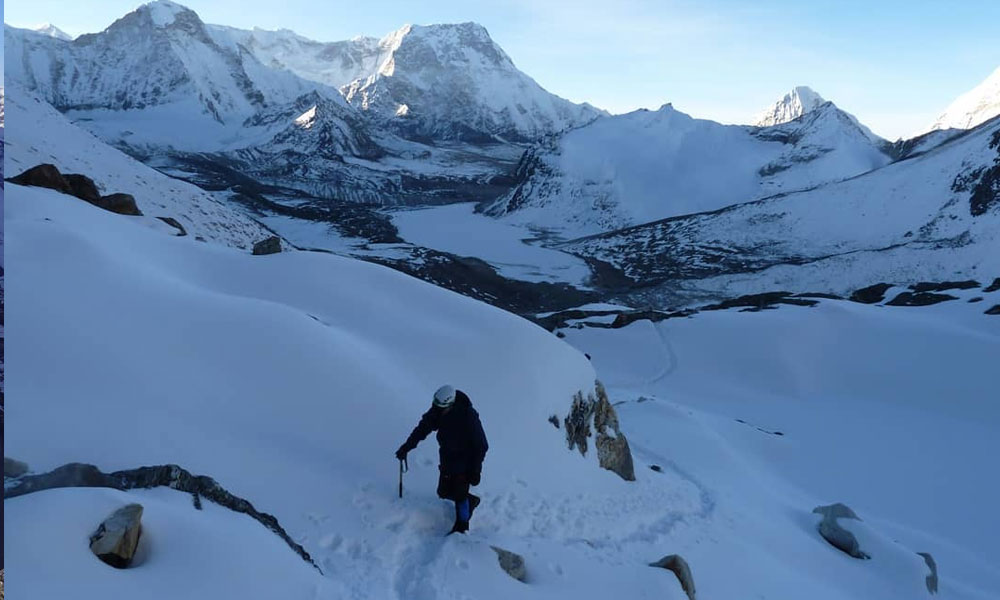
Amphu Lapcha Pass is definitely one of the most difficult trekking routes among all the ones in the Khumbu region. The climb is fairly technical and not meant for beginners. Hence, anyone who has had the experience of climbing mountains for at least a few years and has made it to other technical trekking or mountaineering routes might only be the people to succeed in climbing through the Amphu Laptsa Pass. It wouldn’t necessarily mean that the Pass is fatal in nature, but anyone who does not have prior experience might go through an accident if not careful. Fatality, on the other hand, is quite uncertain.
One has to walk a minimum of 6 to 7 hours every day when you are on your way to the Amphu Labtsa Pass trek. The trek does not necessarily end at Amphu Labtsa, as you will have to go a bit further than what you have in mind. You will be walking and sleeping over 4800m. Even when asleep, there is a great possibility of suffering from altitude sickness. This is also a reason why a whole day will be taken out just for acclimatization. After crossing 4600m, one will start facing difficulties in climbing. The height happens to be at Zatrwa La Pass, which is a route a little below Inkhu-Hongu Valley from the Dudhkoshi River Valley. However, the most difficult you will be facing throughout this trek is at the Amphu Labtsa Pass. The trek at Mahalangur Himalayan Range is going to take you a lot of strength and gear!
Can I go solo trekking to Amphu Labtsa Pass?
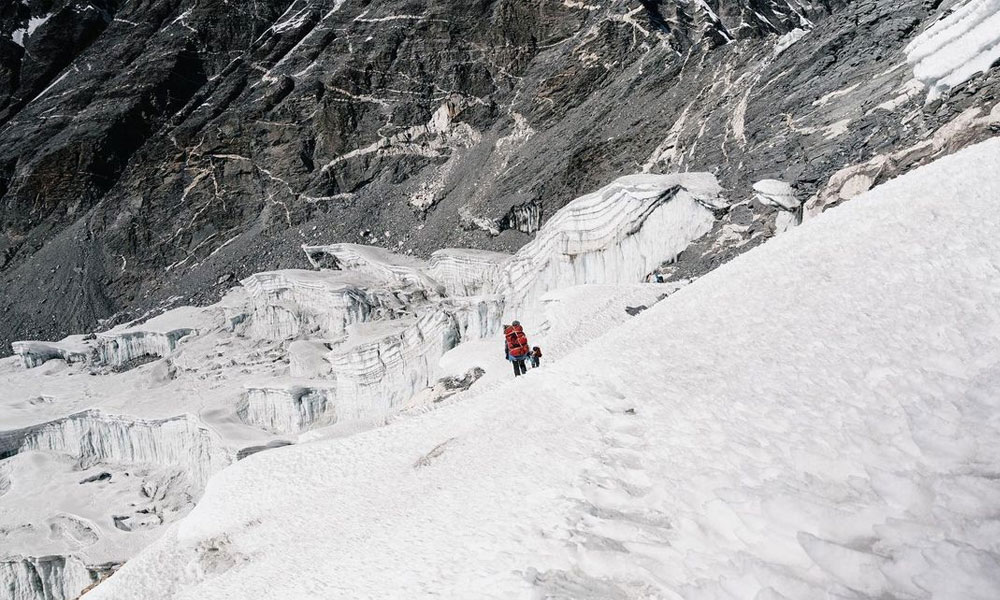
The Nepalese tourism authorities have not quite passed any laws that would restrict visitors from coming to the Amphu Labtsa Pass area. Though there is no restriction, you are more than likely to fail to go on a solo trek at the pass because there is a restriction for trekkers and mountaineers to solo trek in the mountain areas without the company of a trained and professional guide. The guides are usually the Sherpas who are experienced in mountaineering activities. They will fix ropes safely for you to climb the rather technical mountain pass.
Moreover, it is a camping trekking area. Mount Everest area is not preferably what you would call a camping trekking area, but when you are only in the Amphu Labtsa Pass, you will be camping. However, as much as tourists are expected in this area, the lack of infrastructure and extreme rural conditions of the area is known to keep international visitors away more than often. Furthermore, the Amphu Lapcha Pass is one of the least visited areas in the Khumbu region. Following this reason, the authorities have not quite focused on developing or maintaining this mountain pass as much as they have the trails of the Everest Base Camp trek and Annapurna Circuit trek.
If you want to conquer the Amphu Labtsa Pass trek, then you have to make sure that you are well prepared beforehand. If you are planning not to go with a guide and only with a team of expeditors, you might as well want to reconsider your decision. Taking a guide along will not only help you overcome your difficulties but will also lower the chances of any accidents or fatalities. It is, after all, better to be safer than injured. Physical and mental exercise becomes just as crucial!
What will I find and not find in the Amphu Labtsa Pass trek?
There are a few things that you need to keep in mind before you go to the Amphu Lapcha La Pass trek. You are likely to find a few things that you might be seeking, but also not find things that you are likely to be expecting on your trek to this mountain pass.
- A list of factors that you will easily get access to includes;
- Up to 3 stars hotel accommodation
- Hot meals and drinks
- Kathmandu sightseeing before or after the trip
- Trekking permit
- Access to mountaineering gears and equipment
- Experienced guides with fluency in English
- Porters to carry your load
- First kit essentials
- Coverage of emergency evacuation through your travel insurance
- Interaction with Nepali families and their food, culture, etc.
Likewise, there are a bunch of things you will not find on the trek, like;
- Bars in the rural areas
- Nepali Visa fee
- International airfare
Also, read;

